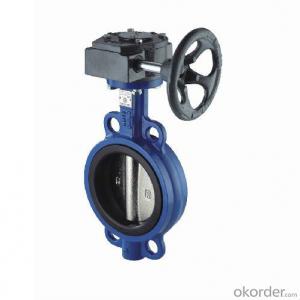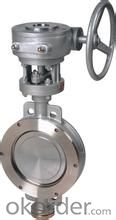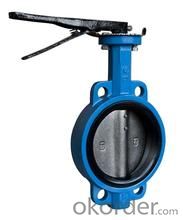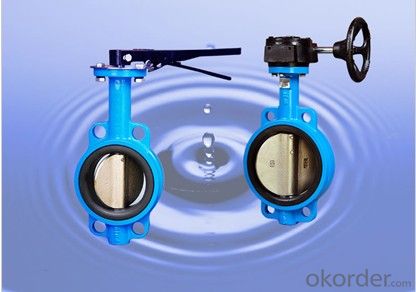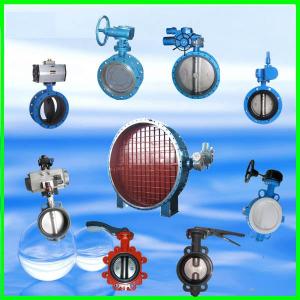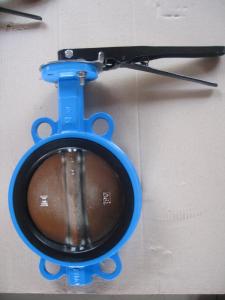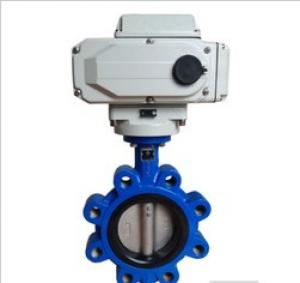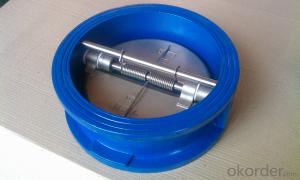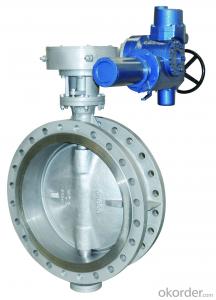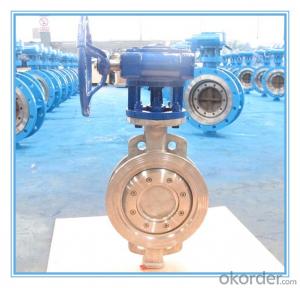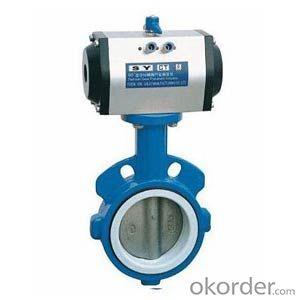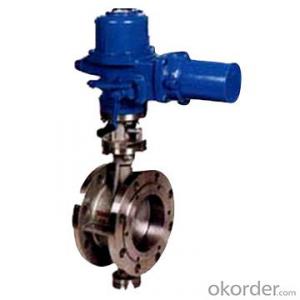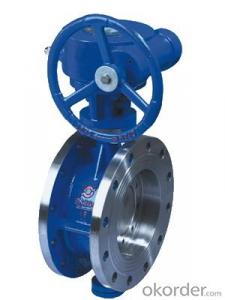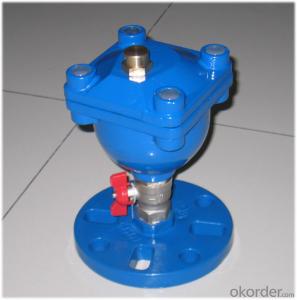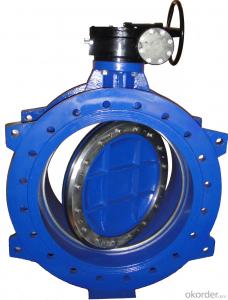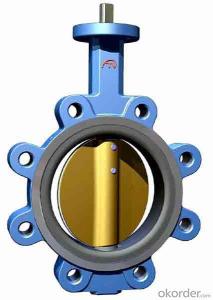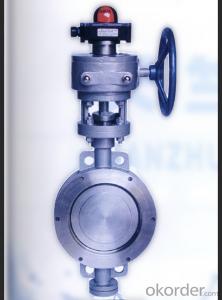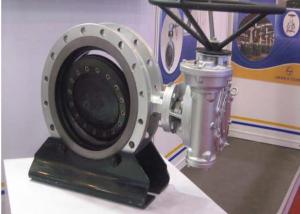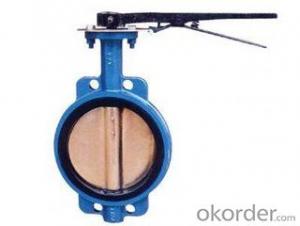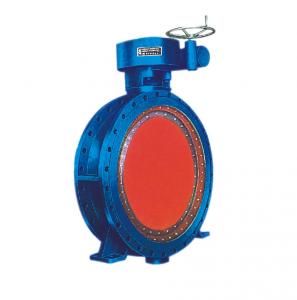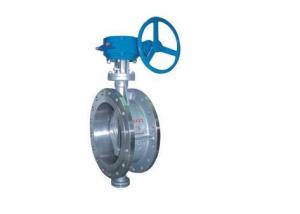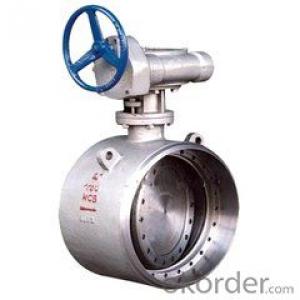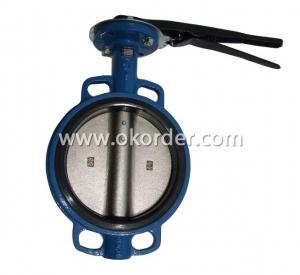Butterfly Valve The Pin Spline or Square Connection China
- Loading Port:
- Tianjin
- Payment Terms:
- TT or LC
- Min Order Qty:
- 1 pc
- Supply Capability:
- 9999 pc/month
OKorder Service Pledge
OKorder Financial Service
You Might Also Like
Wafer butterfly butterfly plate installed on the diameter of the pipe direction. Cylindrical channels in butterfly valve body, disc disc around the axis of rotation, rotation Angle for 0 ° and 90 °, can have the effect of flow control, when the butterfly plate rotation to 90 °, the maximum opening of the valve. The wafer butterfly valve has simple structure, small volume, light weight, only by a few parts. And only need to rotate 90 ° can rapid opening and closing, simple operation, at the same time, the valve has good flow control characteristics.
Our product features are as follows:
1.Newly developed facilities ensure high and stable quality.
2.Enable to supply UL/FM valves.
3.Experienced technology
4.Excellent after-sale service to satisfy customers.
5.Sufficient capacity ensures prompt delivery.
6.Continuous quality improvement and new designs development.
7.Reasonable and stable price
8.Meets different countries standards,such as ANSI,DIN,BS etc.
Packaging Details: Plactic bag+Paper cover+Plywood cases
Delivery Detail: Within 20 days
Specifications
Wafer type butterfly valve
1.Design standard:ISO,BS,API
2.DN40-DN1200
3.PN10/PN16/PN25
4.Center lined disc
Technical Data
DN40-DN1200mm PN1.0-1.6MPa
General Design:ISO 5752 / BS 5155 / API 609
Body: Cast Iron, Ductile Iron, Carbon Steel, Stainless Steel
Seat: EPDM, PTFE, NBR,Viton
Stem: Stainless Steel, Steel,
Disc: Ductile Iron with Nickel Coating,Ductile Iron with Nylon Coating, Stainless Stee 304/316l, Alu-Bronze,Duplex steel
Flange Connection:DIN,ANSI,JIS,BS
Material Specification | ||
Part | Material | ASTM |
Valve Body | cast iron | A126 Class B |
ductile iron | A536 Gr.65-45-12 | |
Valve Disc | ductile iron | A536 Gr.65-45-12 |
bronze | B148 C95400 | |
stainless steel 304 | A351 CF-8 | |
stainless steel 316 | A351 CF-8M | |
Valve Shaft | stainless steel 410 | A276 S 410 00 |
stainless steel 431 | A276 S 410 00 | |
Valve Seat Ring | EPDM/NBR
| |
O-Ring | EPDM/NBR
| |
Bushing | PTFE
| |
bronze | B62 C83600 | |
Dimensions
| DN | mm | 40 | 50 | 65 | 80 | 100 | 125 | 150 | 200 | 250 | 300 | 350 | 400 |
| inch | 1-1/2 | 2 | 2-1/2 | 3 | 4 | 5 | 6 | 8 | 10 | 12 | 14 | 16 | |
| A | 68 | 80 | 89 | 95 | 114 | 127 | 139 | 175 | 203 | 242 | 267 | 309 | |
| B | 110 | 161 | 175 | 181 | 200 | 213 | 226 | 260 | 292 | 337 | 368 | 400 | |
| C | 24 | 30 | 30 | 30 | 30 | 30 | 30 | 34 | 34 | 34 | 40 | 52 | |
| L | 33 | 42 | 45 | 45 | 51 | 55 | 55 | 60 | 67 | 76 | 76 | 102 | |
| DN | mm | 450 | 500 | 550 | 600 | 650 | 700 | 750 | 800 | 900 | 1000 | 1200 | - |
| inch | 18 | 20 | 22 | 24 | 26 | 28 | 30 | 32 | 36 | 40 | 48 | - | |
| A | 327 | 361 | 412 | 459 | 472 | 527 | 554 | 605 | 668 | 728 | 855 | - | |
| B | 422 | 490 | 533 | 562 | 540 | 626 | 660 | 666 | 720 | 806 | 938 | - | |
| C | 52 | 64 | 70 | 70 | 70 | 95 | 95 | 95 | 130 | 130 | 150 | - | |
| L | 114 | 127 | 151 | 151 | 172 | 165 | 167 | 188 | 203 | 216 | 276 | - | |
Product Features
Wafer type flanged body style fit between FF or RF flanges
PTFE bushing ensure the maximum shaft support and centralized alignment
360°polished disc assures positive on-off
Hard-Backed Cartridge seat or Edge-Boot seat
The pin,spline or square connection are all available
Universal ISO 5211 mounting pad.
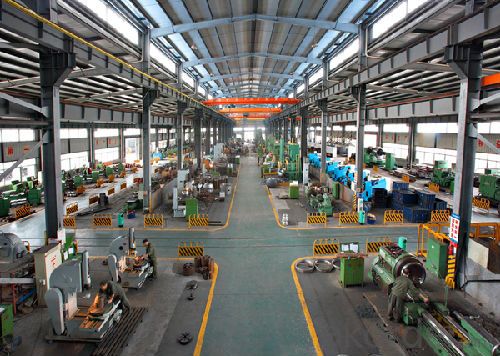
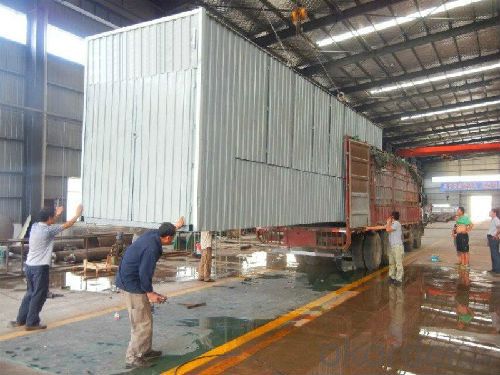
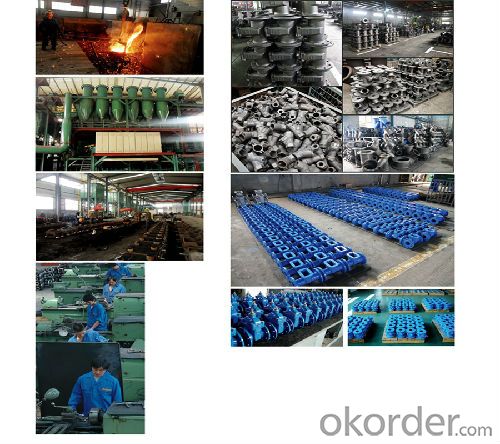
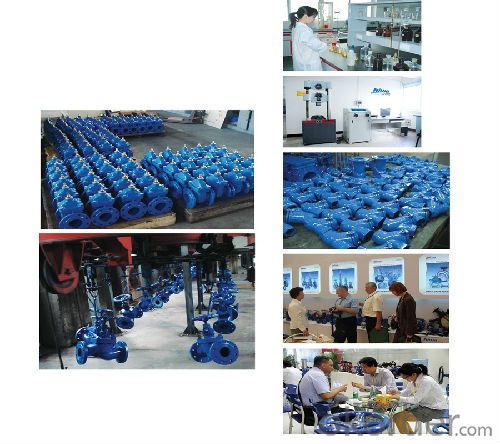
- Q: What is the difference between turbine butterfly valve and flanged butterfly valve?
- The worm gear is the driving mode and corresponds to the handle; the flange is connected and corresponds to the clamp. Flange worm valve is generally, the handle of the butterfly valve
- Q: When will Butterfly Valves be used?
- Butterfly valve is the most common and most widely used in the field of the valve, cases of sewage treatment, water supply, iron and steel, building construction and heating fields needs a lot of valves, especially with the hard seal butterfly valve butterfly valve position and a lot of popularity, the field is used more widely.
- Q: The difference between butterfly valve d71x_10s and d341s-10
- Before distinguishing between the two, you must first read the identification of the valve type:D stands for butterfly valves,3 means that the worm gear is connected and the drive does not indicate the handle7 and 4 indicate pipe to clamp connection, pipe flange connection, respectively1 means single eccentric, that is, the stem is not in the center of the butterfly plateThe former S indicates the material name of the valve body - plastic, X means sealing and the lining material is rubberThe latter S indicates the sealing lining material code ---- plastic, and the valve body is cast iron.10 means stress.
- Q: Are fire fighting signal valves and signal butterfly valves the same thing?
- The same nature: both can open and close, there is also information back fed.Signal valves are collectively referred to as signal butterfly valves.
- Q: The flow ratio of area and maximum flow area of the valve is? If it refers to the opening of the valve rotation angle? Butterfly linear closure refers to the butterfly valve at constant angular velocity close? When the change trend of flow is what? These valves problem bothering me for a long time,
- Butterfly valve is fully open to fully closed is usually less than 90 degrees, the opening refers to the butterfly plate rotation angle;Linear closing should be the locator is linear, if the potentiometer is 0-10 euro, corresponding to 0-90 degrees, 500 Europe, opening 45 degrees;
- Q: I went online to check where was the pcv valve for a 2001 ford focus, but I didn't find it. Does anyone have a picture? Thanks
- 2001 Ford Focus Pcv Valve
- Q: What kinds of butterfly valves are available? What is the working principle of butterfly valves?
- Divided by way of drive(1) electric butterfly valve(2) pneumatic butterfly valve;(3) hydraulic butterfly valve;(4) manual butterfly valve;In the form of structure:(1) Central sealed butterfly valve(2) single eccentric sealed butterfly valve(3) double eccentric sealed butterfly valve(4) three eccentric sealed butterfly valve;Sealing surface material score:(1) soft sealing butterfly valve.1) the sealing pairs are made of non-metallic soft materials, which are made of non-metallic soft materials.2) the sealing pair is made of metal hard material and is made of non-metallic soft material.(2) metal hard sealing butterfly valve. The sealing pair is made of metal hard material and is made of metal hard material.
- Q: How is the lug butterfly valve connected to the flange?
- It is clip type butterfly valve.Connection way is to use butterfly flange flange.The sealing surfaces at the ends of the two rubber sealing rings are respectively butted with the welded flanges welded on the pipe; the two headed screws and the nuts are used for fastening.
- Q: DN80 flange butterfly valve, DN80 flange butterfly valve DN80, flange butterfly valve DN80 what is the difference?
- No, what's the difference?. It's not all the same.Flange connectionDN80 caliber butterfly valve. What's the difference?. Model and pressure. Materials are not ~!
- Q: The difference between vertical and horizontal butterfly valves in municipal water supply
- Vertical and horizontal only installation directions and installation methods are different. Functionally, there is no difference.The main difference between the two methods of installation is that:1. horizontal can effectively avoid the high temperature radiation above the pipe. The disadvantage is that it takes up a lot of space.The advantage of the 2. vertical is that the occupation space is smaller, and it is easy to install. If the pipeline is higher, it is not convenient for maintenance.
Send your message to us
Butterfly Valve The Pin Spline or Square Connection China
- Loading Port:
- Tianjin
- Payment Terms:
- TT or LC
- Min Order Qty:
- 1 pc
- Supply Capability:
- 9999 pc/month
OKorder Service Pledge
OKorder Financial Service
Similar products
Hot products
Hot Searches
Related keywords
